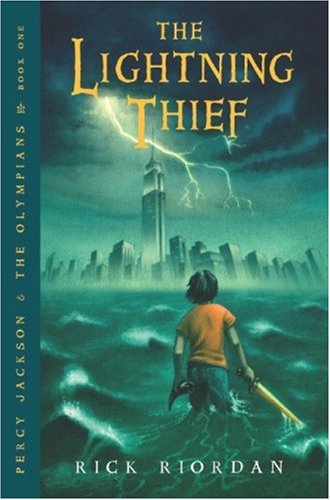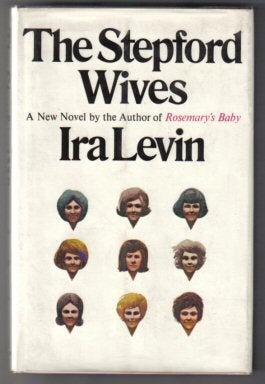I'm really not kidding when I say I read a lot of YA fiction. My last two literary accomplishments are reading through the first three
Anne books by Lucy Maud Montgomery and finishing the
Percy Jackson and the Olympians series by Rick Riordan.
I first read Montgomery's
Anne books when I was in elementary school, around fifth or sixth grade. I didn't remember too much from the series, except for vague images of red headed girls running around in forests and a dashing man with an umbrella. Re-reading
Anne of Green Gables, Anne of Avonlea and
Anne of the Island did not disappoint and in fact brought these images back into clear focus. The first book is definitely my favorite, because o

f Anne's extreme excitability, her amusing rants and joyous outlook on life. I loved most of all her interactions with Gilbert Blythe, from smashing her slate over his head when he called her "Carrots" to his rescue of her when she's stranded in a river. Her stubborn streak is a few miles wide and it's amazingly endearing. During these young years, Anne is at the peak of her dramatic nature and it never fails to be amusing to hear her wail about how her life is
ruined by the lack of puffy sleeves, or not being able to go to a picnic, or accidentally getting her friend drunk, and so on and so on.
Accordingly,
Island is my least favorite of the three: by this time in Montgomery's series, her heroine is becoming a little too perfect to make for enjoyable reading. While
Avonlea mostly follows Anne's quiet few years as she teaches school,
Island finds her going away for college and, lo!, she immediately becomes best friends with the most popular girl on campus, has dozens of men interested in her, finds a lovely house to rent that no one else seemed able to get, is awarded all the scholarships she could dream of... By this point, Anne's looking like she should be called Mary Sue instead (hey, at least there's still an 'e' at the end of the name!).
The high point in these later novels, though, is still Gilbert Blythe. He is the perfect young man throughout the novels -- well, excepting the minor tortures evidenced in the first book -- and is constantly charming and interesting. He's attractive, intelligent and confident. Sure, at times his infatuation with Anne seems a bit far-fetched, but he knows what he wants and is willing to fight for it. But, nevertheless, he won't let himself be pushed around: the man's got backbone and it makes a girl wonder just what other sorts of bones he's hiding, if I can get a little crude.
I decided to stop reading Montgomery's books at the end of
Island because, well, now that Gilbert and Anne are engaged, what more is there to know? I read further on in the series when I was younger, but the household drama wasn't quite as interesting and so I feel pretty secure in putting my acquaintance with Avonlea on hold for now.
The other series I've been plodding through for a while now is Rick Riordan's
Percy Jackson quintet. I listened to the first two books on tape, which naturally takes about three times as long as reading a book oneself, and was very pleasantly surprised by how intricate and involved the world Riorda

n created was. And now that I've finished the whole series, I'm still infatuated.
The series follows Percy in his adventures fighting monsters alongside half-bloods, other children like himself who are half-human and half-God. Percy himself boasts of Poseidon, the sea god, as a father. A prophecy lurks over the entire series and the world becomes slowly more and more in jeopardy as Kronos, the Titan father of most of the Olympians, regains power and control. The last book culminates in a massive battle between the half-bloods and the Titan's army.
But it's not only battle and adventure that spurs these books on: there's also intriguing characters, a few plausible and adorable romances, and, most interestingly in my opinion, a lot of subtle teaching about Greek myths. Anyone who reads these books suddenly can name all the major Greek gods, knows a ridiculous amount about various Grecian monsters, and might even have picked up a little bit of the Greek language.
While Riordan's general plot and character tropes might mirror that of the Harry Potter books, I don't think this is any sort of detraction for his series. Instead, it just means that young adults who enjoyed Rowling's books can now enjoy a series with a little bit of added punch and, perhaps, familiarity, as Riordan's books are set in the United States. Riordan himself even admitted to taking some inspiration from the Harry Potter books, when he wondered why there weren't any adventure books like that for kids like his son: kids with ADD or dyslexia. Percy Jackson, it turns out, has both, like most half-bloods do (the ADD is linked to their natural battle instincts, while less believably the dyslexia is because their brains are hardwired for ancient Greek).
(I do have to say, though, that the movie isn't half as good as the books. In fact, I only made it through the first half of the movie before I was disappointed and upset. I strongly suggest the books over the movie.)
Montgomery's
Anne books are charming and fun, quick reads, but definitely more targeted toward a young female population. They provide an easy blast to the past, set in eastern Canada during the early twentieth century. The Percy Jackson novels, on the other hand, provide an adventure in our modern time, while introducing readers of all shapes, sizes, ages and genders to the idea of courage and pride, of sticking to your friends and believing in family. If I had to choose between these series, I would definitely vote for Rick Riordan over Lucy Maud Montgomery, but that doesn't mean Anne isn't quite as much of a character as Percy. Let's just hope they never meet.
















